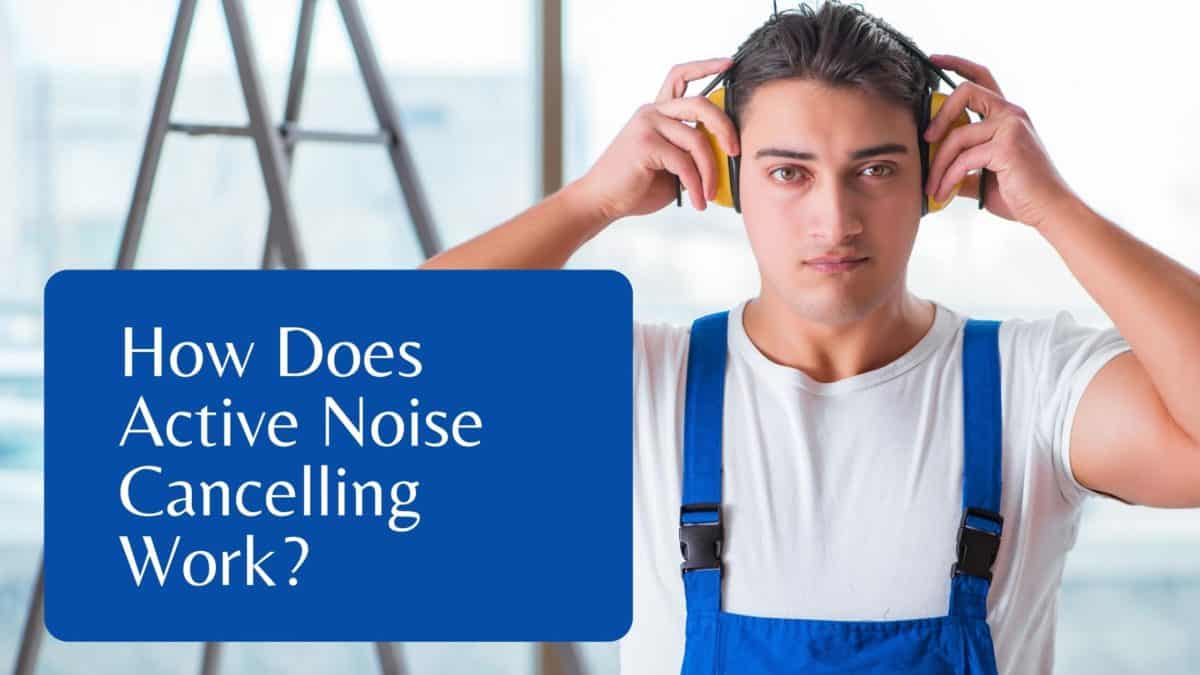- Why You Shouldn’t Do Anything With Your Earwax - April 22, 2024
- Travel Tips for People with Cochlear Implants - April 7, 2024
- How To Have A Great Conversation With People With Hearing Loss - March 22, 2024
Noise is part of our everyday life. From the sounds in our living space to commuting and listening to music or podcasts on our devices as well as the noise in work environments. If you use headphones to listen to audio, you may find yourself regularly adjusting the volume as you navigate settings with different levels of noise. Increasing the volume on your device to drown out unpleasant background noises can be harmful to your hearing health. Consistently absorbing loud noise can contribute to hearing loss, a permanent medical condition that affects a person’s ability to absorb and process sound. A great way to protect your hearing is by investing in active noise-cancelling headphones!
How Loud is Too Loud?
Sound is measured in units referred to as decibels (dB). Noise that is 85dB and higher is considered potentially hazardous for hearing health. We are exposed to this level (and greater) of sound regularly:
- busy city traffic = 80-85dB
- household appliances (vacuum, lawnmower) = 90dB
- subway trains can reach 100dB
- headphones, depending on the type, can reach 100-110dB!
According to the Occupational Health and Safety Administration (OHSA), the safe listening threshold is 85dB for 8 hours. Beyond that, the risk of damage to hearing increases. OHSA suggests that after every 3-decibel increase (after 85dB), the duration of safe exposure time should be reduced by half:
- 85dB: 8 hours
- 88dB: 4 hours
- 91dB: 2 hours
- 94dB: 30min
Surpassing these limits poses a great risk to hearing capacity. Absorbing sound that
equals and/or exceeds 85dB can irreparably damage the hair cells in the inner ear. These hair cells help translate soundwaves into electrical signals that are then sent to the brain to be further processed. This is what enables us to understand the sound we hear. Loud noise can cause these hair cells, which unlike other types of cells do not regenerate, to lose sensitivity and/or die. This reduces their capacity to perform their critical function which results in hearing loss.
Active Noise Cancelling Technology
An effective way to reduce your risk of harming your hearing health is by using noise-cancelling headphones! Active noise-cancelling technology is designed to reduce background noise which prevents you from having to increase the volume while moving through noisier settings. This offers significant protection for your hearing, allowing you to listen to audio at safer levels and for longer periods of time.
But how do active noise-cancelling headphones actually work? Well, the microphone built into the headphones collects all of the sound in your environment. The sound waves are then analyzed and the active noise cancelling technology plays a sound wave that is inverted. These soundwaves then cancel each other out which filters out unwanted background noise. Active noise-cancelling technology can reduce background noise by up to 30dB! This is a significant reduction that makes background noise faint and nondisruptive. Noise cancellation allows for enhanced sound quality at safe volume levels. This prevents you from having to manually adjust the volume on your audio devices as well as protects your hearing.
Active noise cancellation technology is especially useful to invest in because we are listening to audio on our devices more and more. Talking on the phone, facetime, listening to music, podcasts, audiobooks etc.; our electronic devices have become staples in our daily lives. Because of this, the World Health Organization estimates that over 1 billion people (ages 12-35) globally experience an increased risk of developing hearing loss. A significant way to reduce this risk is by protecting your hearing health from exposure to loud noise. Using noise-cancelling headphones provides ample protection while still providing quality listening experiences.
Additional Tips
In addition to investing in noise-cancelling technology, there are numerous ways you can protect your hearing health including the following:
- take listening breaks which allows your ears to rest from constantly absorbing sound. You can do this by turning off any sources of loud noise and sitting in a quiet space.
- wear other types of protective gear like earplugs when navigating loud noise
- have your hearing tested annually. Hearing tests involve a painless process that measures hearing capacity in both ears. This establishes your hearing needs and effective ways to meet those needs.
If you are ready for a hearing test, we’re here to help! Contact us today to schedule an appointment.

